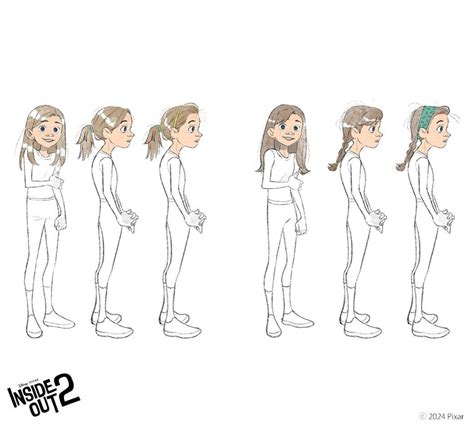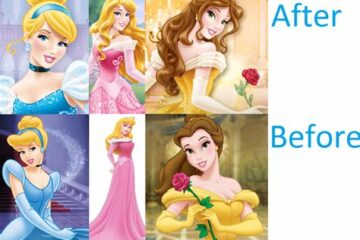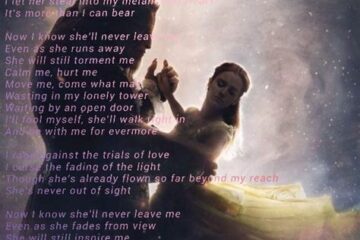
The Science Behind Disney Character Design
In an enchanting world where imagination meets innovation, Disney stands as a testament to the art and science of character design. Every beloved Disney character, from the charmingly mischievous Mickey Mouse to the brave and adventurous Moana, is crafted meticulously, combining creativity with psychological insights. This article delves into the fascinating science behind Disney character design, exploring what makes these figures resonate so deeply with audiences around the globe. We will unravel the intricate layers of character appeal, the psychological principles at play, and the strategic use of color that shapes our perceptions. Additionally, we’ll investigate how character expressions convey emotions and how narrative integration enhances their allure. Join us on this captivating journey as we uncover the secrets behind the magical characters that have captured hearts for generations.
Understanding The Science Of Character Appeal
At the heart of Disney’s enduring success lies the science of character appeal, a complex interplay of design elements that resonate with audiences of all ages. Character appeal can be defined as the quality that makes a character likable, relatable, and memorable. This allure is not purely subjective; it is grounded in psychological principles and design strategies that aim to elicit emotional responses from viewers.
One key factor in achieving character appeal is the concept of familiarity. Disney often employs characteristics that audiences find recognizable and comforting, such as friendly facial features or relatable emotional expressions. These familiar traits can instantly create a connection, making characters more engaging. For instance, large, expressive eyes are a common feature in Disney characters, which invite empathy and convey a range of emotions effectively.
Another aspect to consider is the balance between uniqueness and universality. While Disney characters often possess distinctive traits that set them apart, they also embody universal themes of love, bravery, and friendship. This duality allows them to appeal to a broad demographic while maintaining individual charm. Characters like Simba from The Lion King or Elsa from Frozen resonate with audiences not only because of their extraordinary stories but also because their personal struggles echo universal human experiences.
The silhouette is another powerful tool in the science of character design. A strong, recognizable silhouette helps audiences identify characters instantly, even from a distance. Disney designers often experiment with exaggerated shapes and proportions to create iconic profiles that stand out.
In essence, the science behind character appeal intertwines psychological insights with artistic creativity. By understanding how audiences perceive and connect with characters, Disney continues to create beloved figures that leave a lasting impression on viewers around the world.
The Role Of Psychology In Disney’s Character Design
The intricacies of character design at Disney extend beyond artistic vision; they delve deep into the realm of psychology. The creation of memorable characters is often informed by a thorough understanding of psychological principles that govern how audiences perceive and interact with visual stimuli.
One key factor is the concept of the science of archetypes. Disney frequently employs universal character types, such as the hero, the mentor, and the trickster, which resonate with audiences on a subconscious level. By tapping into these archetypes,Disney characters evoke familiar emotions and associations that facilitate connection and empathy.
Furthermore, Disney’s designers utilize traits like facial symmetry and proportions based on the Golden Ratio. Characters like Ariel or Simba use these traits to instill an immediate sense of attraction and approachability. For example, larger eyes and smaller mouths often signify innocence and vulnerability, effectively drawing in viewers and creating emotional bonds.
Additionally, Disney’s characters are often designed to reflect personality traits in their physical appearance and movements, harnessing the psychology of body language. A confident character may exhibit strong, upright posture, while a timid character may shrink or fidget. This alignment between the science of psychology and character design enables audiences to intuitively understand personalities without needing explicit dialogue.
In essence, Disney’s successful character design is rooted in a deep understanding of psychology that guides decisions in aesthetics, behavior, and emotional representation. By leveraging the science behind human perception and emotional response, Disney crafts characters that not only captivate viewers visually but also resonate with them psychologically, ensuring lasting connections and unforgettable stories.
How Colors Influence Perception In Disney Characters
Color plays a crucial role in shaping audience perceptions and emotional responses to Disney characters. The use of color is not merely decorative; it involves an intricate understanding of the science behind visual stimuli and their psychological implications. From warm hues that evoke feelings of joy to cool shades that may suggest calmness or sadness, Disney character designers strategically employ color to enhance character identities and narratives.
For instance, consider characters like Olaf from Frozen, who is predominantly white and blue. These colors evoke feelings of tranquility and innocence, reflecting Olaf’s cheerful yet naive personality. In contrast, the villainous Maleficent, with her deep purple and black palette, instantly conveys a sense of danger and malevolence, aligning with her role in the story.
Additionally, color can reinforce character traits and relationships. For example, characters that are allies often share similar color schemes (think of the harmonious greens and browns of the forest friends in Bambi), while contrasting colors identify rivals or adversaries. This visual differentiation helps the audience quickly grasp the dynamics at play without lengthy exposition.
Furthermore, Disney’s use of vibrant and eye-catching colors also caters to the attention spans of younger audiences, ensuring that characters are memorable and engaging. Bright colors have been shown to attract attention and can even influence a child’s preference for one character over another, affecting their emotional engagement with the story.
The colors chosen for Disney characters are meticulously crafted to elicit strong emotional reactions and to convey essential information about character traits, relationships, and even narrative developments. This thoughtful application underscores the importance of the science behind color psychology in character design, making the visuals as impactful as the storytelling itself.
The Science Behind Character Expressions And Emotions
Understanding The Science behind character expressions and emotions is a pivotal aspect of Disney’s character design process. Characters are often designed to evoke a specific emotional response from the audience, allowing them to connect deeper with the story. This emotional connection is facilitated through a variety of expressive techniques.
One foundational element in this process is the use of facial expressions. Disney animators often study real human emotions and expressions, capturing the nuances of how feelings manifest physically. For instance, the curvature of a character’s mouth, the positioning of their eyebrows, and the depth of their gaze can convey joy, sadness, anger, or surprise. By closely mimicking these traits, characters become more relatable and their emotional journeys resonate more profoundly with viewers.
Another aspect involves the concept of “appeal,” which is a crucial factor in Disney’s character design. Characters are crafted to be visually appealing, but their appeal is heightened when they express emotions that are universally understood. This technique engages audiences on a psychological level, as individuals are more likely to empathize with characters that exhibit familiar emotional responses.
Color psychology also plays a vital role in conveying emotions. Different colors evoke different feelings—for instance, red can signify excitement or anger, while blue may evoke calmness or sadness. By strategically implementing colors, Disney designers enhance the emotional narrative of their characters, making the expressions even more impactful.
Furthermore, the exaggeration of expressions is a hallmark of animation that allows for more substantial emotional communication. Disney characters often employ larger-than-life expressions, which serve to amplify feelings and draw viewers into their emotional experiences. This method not only captivates the audience’s attention but also ensures that the character’s feelings are unmistakably communicated, despite the animated medium.
The science behind character expressions and emotions is a multifaceted approach that melds psychological principles, color theory, and artistic expression. By understanding and applying these elements, Disney successfully creates characters that not only entertain but also resonate on a personal level with audiences worldwide.
Integrating The Science Of Narrative With Character Design
Disney characters are not only designed with visual appeal in mind but also to serve the narratives of their respective stories effectively. The integration of The Science behind storytelling and character design is crucial for creating memorable and relatable characters. This process often involves a deep understanding of narrative structure and emotional engagement.
One of the key aspects of integrating narrative with character design is establishing a backstory for each character. This provides a foundation for their motivations, which can enhance the audience’s emotional investment. For example, characters like Simba from The Lion King are designed to reflect their journey and struggles, making their development within the narrative more impactful.
The use of archetypes is another significant element in this integration. Certain characteristics represent broader themes that resonate across cultures, making them universally relatable. Disney artists often draw inspiration from age-old archetypes, crafting characters that not only fit within the overarching story but also symbolize larger ideas, such as heroism, friendship, and redemption.
Additionally, the relationship between a character and their environment or other characters can provide context to their narrative. A character’s design elements, such as clothing, accessories, and physical traits, should complement the world they inhabit and the roles they play within the story. For instance, a villain may be portrayed with darker colors and sharper features, signaling their opposing nature to a more virtuous protagonist.
Effective character design also pays heed to the storytelling techniques used within the film. Elements like visual storytelling—where the character’s actions and expressions communicate their emotions and intentions—play a vital role in conveying narrative depth. By aligning character design closely with the story arc, Disney creates characters that not only look engaging but also enrich the storytelling experience.
The synthesis of The Science behind narrative and character design is essential in shaping Disney’s iconic characters. Through thoughtful consideration of backstory, archetypes, environmental relationships, and visual storytelling, Disney continues to captivate audiences of all ages, ensuring that both the characters and their narratives remain unforgettable.
The Artistry Of Beauty And The Beast Lyrics
December 26, 2024Comparing Disney Princesses: Old Vs New
December 26, 2024How Different Cultures Interpret Disney Characters
December 26, 2024The Social Impact Of Disney Princesses
December 25, 2024Decoding The Subtle Messages In Beauty And The Beast Lyrics
December 25, 2024Beauty And The Beast Lyrics: A Sign Of The Times
December 25, 2024
Leave a reply Cancel reply
Recommended
-
Lyrics Breakdown: What Makes Beauty And The Beast Special
December 22, 2024 -
Belle Songs From Beauty And The Beast Lyrics
August 20, 2023 -
The Illusions of Beauty and the Beast Jr Dating Song
October 6, 2021









